Several bangs for your (zero) bucks this time out, as we’ve a preview of Arkane Studios’ rather splendid-looking new first-person-er, Dishonored; a flashback or two to a time in gaming’s ongoing evolution where full motion video was briefly The Done Thing (no matter how poorly it was done); a Fantastic Five from Lone Wolf; a review of Codemasters’ new release Dirt: Showdown; a topical Best. Game. Ever.; and a clutch of exciting new videos from this year’s E3 event, held in Los Angeles on June 5-7.
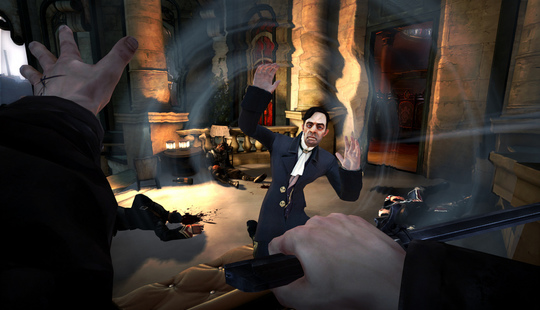
Preview – Dishonored
With BioShock Infinite having slipped in the release schedule to an on-shelves date of sometime in early 2013, Dishonored – an Arkane (Arx Fatalis, Dark Messiah of Might and Magic) development with Bethesda (Fallout 3, Skyrim) handling publishing – might be the most interesting FPS of 2012. Halo 4 and Call of Duty: Black Ops II are sure to soak up the spare change come their November releases; but this title, due a month earlier, looks like exploiting the gap left by Ken Levine’s stalled sort-of-threequel, offering a comparable world of steampunk-styled environments and dual-wielded ‘magic’/firearms gameplay.
The gameplay footage (below) certainly bears similarities to the combat found in the BioShock games, albeit with more hand-to-hand encounters and rather bloodier outcomes, and there’s a suggestion of Half-Life 2 about things, too. With deep-rooted reasons: Viktor Antonov, who designed Half-Life 2’s City 17, is on the creative team, and Arkane were consulted during BioShock 2’s aesthetic development. Also on board is Harvey Smith, whose CV includes credits on the likes of System Shock and Deus Ex. Summary: Dishonored has the talent behind it to make many a triple-A release turn green with understandable envy.
The set-up for Dishonored is intriguing, too. Set in, among other locations, a vaguely futuristic vision of plague-era London (the city in question is called Dunwall; the player can command diseased rats to attack enemies), this game leaps off the screen in a manner comparable to the decayed environs of Rapture, the collapsed cityscape of Crysis 2’s New York, or the aforementioned Combine-occupied streets and sewers of City 17. This is urban warfare quite unlike the vast majority of videogame environments; this is run-and-jump-and-gun-and-gasp adventuring via the minds of Tim Burton and Sherlock Holmes-hat-on Guy Ritchie.
The story – outlined in the below cinematic – revolves around protagonist Corvo Atano. Able to handle a sword as easily as he can manage powers of a more supernatural variety, in the player’s hands Atano will be able to explore the world Arkane has crafted, choosing to aid or ignore the problems of his fellow citizens as the main quest takes him on a journey of murderous vengeance (or not, as a non-lethal path can be followed). Open-world environments are nothing new, but Dunwall, and the far larger landscape it rests within, look like amazing places to explore. Far removed from the tight tunnels of Rapture, and the first title in what could be a strong new IP if the end product lives up to expectations, this could even be a BioShock beater. And this gamer loves a Big Daddy.
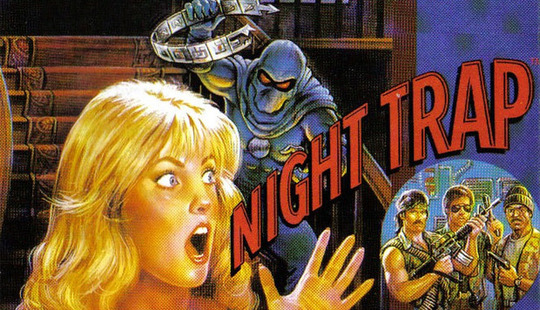
Lights, Camera… oh dear: Full Motion Video Gaming Remembered
There’s a reason for picking over the rightly buried, still-rotting corpse of full motion video games, a collective of (mostly) awful titles that saw ropey actors deliver lines written on the back of damp beer mats in a manner that even the producers of Hollyoaks would baulk at, until the player intervened with a press of the A button, either shooting a gun or switching a camera or… Basically, there wasn’t a great deal of gameplay to a great number of these games. But that reason: I just unpacked my Mega-CD following a house move. Beside it: copies of Night Trap and Ground Zero: Texas. What follows for the next few paragraphs is the worst kind of nostalgia, the exhuming of crap that should have been crushed to coal by now.
Yet, I’ll continue. Because despite the awful reputation that FMV games have – evidenced by the fact that nobody makes them anymore (at least, not to any degree of exposure I’ve observed) – a handful of games are interesting footnotes in the progression of gaming from the 16-bit era to the bright, shiny products you lot are hammering through on your PCs and PS3s. FMV gaming really hit the big time of home system compatibility with the rise in CD-format software and the release of Night Trap in 1992; but once developer Digital Pictures’ breakthrough title had seen its controversy-generated 15 minutes pass (controversy with little grounding, stirred by campaigners who’d not played the game), all that was left was a rubbish game where the player controlled cameras in a mansion, trapping vampires before they could make off with slumber-partying girls.
Night Trap was a game where the only route to success was to note down incidents and the time they occurred, and in what room, and then play through cutting away from whatever might be happening somewhere to what must be prevented elsewhere. Though the player might want to follow the story unfolding in Location A, not switching to Location B to trigger a trap would ultimately mean game over as an unseen girl was kidnapped by an unseen nasty. On the Mega-CD its graphics were serviceable – the machine did what it could with the rubbish innards it was given – but on the PC and 3DO, this was as close to an interactive movie as gaming got in the early 1990s. Such a shame then that Night Trap was impossible to complete without a guide (or the patience of several saints), and that there was no satisfaction to be had from finishing it either, as the same events happened in the same places at the same times every game. Repeat play value: zero.
Ground Zero: Texas was a Rather Bigger Deal. Whereas Night Trap recycled footage from the 80s and its biggest star was the late Diff’rent Strokes actress Dana Plato, 1993’s GZ:T contained all-new video content stretching to almost two hours, and was directed by Dwight H Little, whose Halloween 4 had done some serious business at the US box office. Some seriously average business. But still, with a name behind the camera, one in front of it in the shape of Steve Eastin (Field of Dreams; he’d go on to feature in Con Air and A Man Apart), and two million dollars in the budget, GZ:T perhaps marked FMV-gaming’s zenith in terms of ambition. That it was a perfunctory shooter gameplay wise doesn’t say much for its longevity; but the setting of its alien invasion – a small border town – was a change from the usual sci-fi locales, and the story chugged along like a decent B-movie.
Ken Melville of Digital Pictures hated how the game looked on Mega-CD; but Edge, reviewing at the time of the game’s release, called its visuals “breathtaking”. Compared to earlier FMV games on Sega’s soon-to-be-discontinued CD platform (looking at you, Sewer Shark, Sherlock Holmes), it did look better; but the Mega-CD couldn’t do photo-realism, so everything was awkwardly processed into 64-colour presentation that did little to assist the short-sighted player’s aim. GZ:T rates as one of the Mega-CD’s better FMV releases; alongside it, 1994’s Tomcat Alley was a fast-paced Top Gun-styled game using full-screen FMV (the only Mega-CD game to do so), and is worth a bash today. But a handful of ancient animation-over-live-action laserdisc ports aside – Road Avenger, Cobra Command, Time Gal – no other FMV-style games on the Mega-CD are worth investigating nowadays; unless you’re really after a hair-pulling experience.
It wasn’t just the Mega-CD that supported a slew of shoddy FMV games. Mac, PC and Saturn owners would get their share (some good, some bad, some called Phantasmagoria), and the celebrated Wing Commander III, which saw John Rhys-Davies, Tom Wilson and Mark Hamill in all their FMV glory, made it to the PlayStation. But two less-common machines, the Philips CD-I and Amiga CD32, released in 1992 and 1993 respectively, were timed perfectly to capitalise on the brief FMV boom. And so they did, to each machine’s ultimate downfall. Commodore’s ill-fated console, discontinued less than a year after its launch as its manufacturer went bust, frequently attached a few FMV clips to games that otherwise looked indistinguishable from floppy disc releases. Philips’ machine had its share of interesting FMV-heavy titles though, including TripMedia’s 1994 hit, Burn:Cycle.
Combining its standard FMV clips with 3D environments, which were navigated in a point-and-click fashion, Burn:Cycle counts down from two hours as the player, as Sol Cutter, attempts to remove a fatal virus from his brain. No solution in the allotted time: pop goes your head. The story has parallels with the movies Hackers and Johnny Mnemonic, although the game predates both films. Instead, it’s likely that TripMedia looked to the same source material as the writers behind Keanu Reeves’ 1995 action flick, namely William Gibson’s short story (also) called Johnny Mnemonic, from 1981. With a cyberpunk flavour and throbbing electro soundtrack, Burn:Cycle felt so ‘now’ at the time that it couldn’t fail – and it duly didn’t, earning positive reviews and injecting new life into an ailing system.
But no mention of the CD-I can pass without also looking at The 7th Guest, a haunted mansion-set puzzler with moderate horror overtones, powered by plenty of FMV scenes. Developed by Trilobyte and published by Virgin, the 1993 release was one of the first games to be available exclusively on CD-ROM. Pre-rendered 3D graphics comprised the visuals outside of the FMV, much like Burn:Cycle, and like TripMedia’s effort The 7th Guest was aimed at a mature audience – the BBFC slapped a 15 certificate on it. Gameplay wise, the mansion was navigated via a pint-and-click interface; hovering over certain areas of the screen would highlight interactive elements. Some puzzles were frustrating indeed, but in-game hints accessed in the mansion’s library helped save controllers from being smashed against walls. Like most FMV games, it doesn’t hold up to repeat plays – once a puzzle’s solved, only memory loss will make it a challenge again (for the most part, anyway; some appear to be solvable at random, and the basement-set maze infuriates every time). But The 7th Guest’s enduring appeal – an iOS version was released in 2010 (review video below), and a third game in the series is on the cards – marks it as a splendid rarity: a FMV game that’s just about stood the test of time.
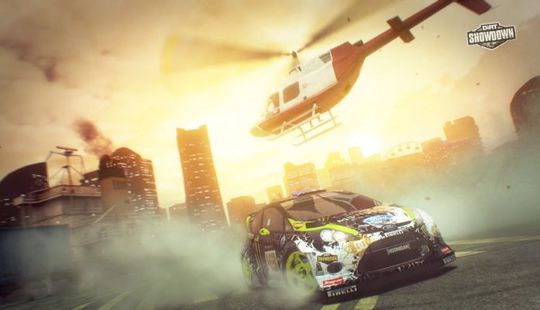
Review – Dirt: Showdown
Codemasters
Xbox 360 (tested), PlayStation 3, Windows
An arcade-y branch from Codemasters’ celebrated Colin McRae series of rally games, Dirt: Showdown shares more strands of DNA with the likes of Reflections’ 1995 title Destruction Derby – a massive hit on the PlayStation – and the Burnout series than it does the high-quality simulation-style drivers its developer has become synonymous with.
And this is, for a gamer with little lust for perfecting a racing line around the streets of Monte Carlo, a very good thing. Showdown never takes itself too seriously, and encourages the player to muck around a bit, to take risks and not worry about the consequences. Races can be restarted in an instant without punishment, and trick contests can be replayed at a later date if one’s first and second attempts to nail a series of doughnuts don’t result in a first-place finish. This is a game that lets the player feel their way into it before ramping up the difficulty – and when things do become heated, there will have been chances aplenty to upgrade a vehicle to a competitive level.
A variety of game modes are presented across four difficulty levels in ‘career’ mode. There’s a straightforward race set-up where eight vehicles charge around a circuit, and he who comes first takes the glory. And there’s a couple of spins on this format: the 8-Ball events (video, below), where crossover sections of the track present the potential for some spectacular crashes; and Eliminator, where the last-placed car is disqualified after a set amount of time, until only one car, the winner, remains. These two twists on ‘standard’ races are amongst the most enjoyable events on offer.
Events where the player is challenged either by one other competitor, or simply against the clock, can be the most frustrating. Trick runs are, appropriately enough, very tricky to get the hang of, and missing one target in a line of seven or eight can ruin an otherwise perfect run. These events require serious commitment if the player is going to win through a difficulty level – a league, if you will – with a perfect points total. Not every contest requires a top-three finish in order for progression to be made – new tracks and vehicles to purchase are frequently unlocked – but those looking to rack up achievements will want to complete every challenge.
Showdown looks great. Its menus – once you’ve convinced the game you really don’t want to play online (if that’s your choice, as it was mine) – are easy to navigate and the overall presentation is top-notch. Races are fast, crashes look amazing (and can be replayed in slow-motion using the ‘crashback’ function, and subsequently uploaded to YouTube), and the array of fictional cars are well designed. Real vehicles are only available in the trick events – aka the ‘Hoonigan’ contests – as presumably Ford and the like didn’t fancy seeing their shiny toys obliterated in the Demolition face-offs. Of which there are many, and each mode is equally enjoyable.
The one thing that lets the game down somewhat is the awful commentary, full of ‘dude’-like shtick that’d have Johnny Utah wondering if he was reading from the right script. The music’s nothing to write home about either, with the usual array of licensed riffs and beats, Nero and Rise Against amongst the most recognisable names involved. But the crunches and clangs, the screeches as metal grinds against metal, and the explosions of fireworks as the player boosts their maxed-out monster (‘You’ve Created a Monster’ being the 360 achievement for fully upgrading a vehicle) off a ramp all sound fantastic.
Codemasters’ reputation for driving games precedes them, but this sidestep into fun-first, serious-face-second gaming could have resulted in an end product that leaves the player short-changed. But there’s enough content here to lose oneself in for many an evening, and online-only modes aid Showdown’s longevity cause considerably. Not that I played any of them, but I’m sure they’re like Castrol GTX-flavoured catnip to the gaming community’s petrol-head contingent. And if not, well, you can have that commentary dude call you Gonzo every time you fire the game up. Which is something.

Fantastic Five – Lone Wolf
Lone Wolf, aka Paul Marshall, knows his way around an earworming melody as well as he does a quality game or two, which is precisely why he’s here, now, waxing lyrically about five of his all-time favourite videogames.
Marshall followed his debut album of 2007, Vultures (released under his own name), with a celebrated second set, 2010’s The Devil & I, via Bella Union. The album earned an 8/10 review on these pages – click here to read it – and also received recommendations from The Line of Best Fit, Clash (who called the LP “absolutely gorgeous,” even if they thought it was a debut, that Paul was a band, and that he was Swedish) and Music OMH, who called it a “haunting” listen comparable to Midlake. The Devil & I spawned the single ‘Keep Your Eyes on the Road’, the Peter Gabriel-does-‘Sledgehammer’-tribute video for which is below.
Marshall is currently in the process of collecting pounds and pennies, via PledgeMusic.com, to release his third album, The Lovers. More information on the project, and a stream of the track ‘The Swan of Meander’, can be found at the official Lone Wolf website.
Jet Set Willy
(Commodore 64; Wikipedia)
"This is, without doubt, the hardest game known to mankind – perhaps for two reasons. The most obvious reason is that due to the nature of the ‘once you’ve jumped, you’re committed’ style controls, you lose lives like they are going out of fashion. It was made to be that difficult. You have to jump at precisely the right time to get over certain obstacles and there is _no_ room for manoeuvre whatsoever. The other reason is that due to a problem called ‘the attic bug’ (which was later rectified) the game was actually impossible to complete.
"So why is it one of my favourites? Mainly because I’m a dick. I’m a glutton for punishment and I cannot go to my grave knowing that I didn’t ever manage to complete it. But it’s not just that. The music burrows its way into your brain while you are dealing with all manner of bizarre floating enemies, the house the game is set in has rooms with the most insane names like Dr Jones will never believe this, and you simply must see what is coming next. I’ve never wanted to clean up a house so much in all my life."
Super Mario Bros 2
(NES; Wikipedia)
"To be honest, this franchise is generally all win win, although I’m still confused why Mario hasn’t just dumped Princess Peach after the amount of shit she has put him through.
"SMB3 was the REAL turning point in Mario games, but 2 is so different that I think it just makes it as my favourite. Apparently this was never originally intended to be a part of the Mario franchise and it was another game shoehorned to fit. The result is a strange cocktail of Mario-like visuals with a different control set. It’s kinda like watching the Tracey Ullman version of The Simpsons.
"You can choose which character you’d like to be and each has a different strength (I was always liked Luigi because he can jump higher and longer). Instead of jumping on top of enemies to defeat them you have to jump on top of them, then pick them up above your head and throw them; or, in the case of the bosses, you jump on their projectiles and hurl them back.
"There are some particularly odd features involving a potion that sends you into a kind of alternate realty from which you find energy boosting mushrooms and also a way to warp to other levels, and well as a 1up-generating fruit machine at the end of each level. I think it was the best Mario just because it was a bit, I dunno, weird?"
Flashback
(Mega Drive; Wikipedia)
"This is my favourite videogame ever. It is the only game that I have completed multiple times and I come back every two or three years to do it again.
"At the time (1992), there was no game that looked and felt as slick as this. The rotoscoped graphics made Conrad’s movement look and feel realistic, and there was no side scrolling.
"I find it very hard to describe exactly what it is about this game that makes it feel so important. It was a cinematic affair (which hadn’t really been seen before) and that aspect alone made it feel like YOU were Conrad (the hero), and you had to play everything correctly or else YOU would fail. There were realistic elements like the fact that you couldn’t fall too far or else you’d die, and also the enemies could shoot each other if you were quick enough to get out of the way.
"The six stages were all very different and very ‘serious’ in their themes, ranging from simply having to get a job, through to entering a The Running Man-style game show in order to get enough money for a ticket home.
"There was very little music in the game, which really added to the atmosphere as much of the experience was played in silence, with the odd splash of synths crashing in at important moments. Seriously, Flashback is the best game ever made, and if you haven’t played it yet, do it as soon as possible. Even in this day and age you will not be disappointed.
Half-Life 2
(PC; Wikipedia)
"This was the first game since Flashback that I can safely say blew me away. Graphics had obviously evolved somewhat since the Mega Drive days and I had never seen anything on the PC look quite as textured. The facial expressions, the lip-syncing, the reflections and even the way that Gordon Freeman was able to interact with, well, everything – it was amazing. I spent a good time having fun throwing bottles and cans at the Combine soldiers in the train station right at the start of the game, knowing that no matter how many times they battered me for doing so, I wouldn’t die.
"But as the game moved on, the realisation of what an absolute joy this piece of programming was hit home. Everything about it feels and looks ‘real’. The controls feel ‘right’ and it’s so much more than your average FPS. The storyline hooks you in and you immediately have a sense that things are only going to get tougher, better and worth sticking around for.
"This game is genuinely spooky, too. I think anyone who has played the section called ‘We Don’t Go To Ravenholm’ will agree. You’re constantly being jumped at by headcrabbed zombies, and you generally have ‘not quite enough’ ammo which is guaranteed to get the pulse racing, especially when you have to defend yourself against a zombie onslaught with just a crowbar.
"The fun factor is there in droves, too. You get to wazz around in a jeep across a beach getting chased by antlions, and when you get the anti-gravity gun, oooh momma your life is changed. A true piece of gaming gold."
Fallout 3
(Xbox 360; Wikipedia)
"This game ruined my life. Everyone knows that possibly the worst thing you can ever offer anyone is ‘choice’, and choice is everything in this game. The game starts with your character actually being born. The doctor says, “Congratulations! It’s a…” and you choose your gender. This pretty much sets the theme for the whole game. Choice, choice, choice…
"It is set in a gritty post-nuclear landscape and you are a survivor having grown up in an underground bunker. After one of the most awesome opening 30 minutes of a game ever (where you essentially get to decide what kind of a personality you are going to have through various emotional scenarios), you get to exit said bunker and start making your way across the dusty landscape. Which way do you go? You have every one of the 360 available degrees to choose from!
"Obviously there is a main storyline in there. You’re searching for your father and trying to restore humanity; but due to the open gameplay, you can come and go to and from the main plot as and when you please. There are sub-plots galore and I’ll be surprised if anyone really has seen all of them. One time I was just wandering around and I found a small, spooky farmhouse, in which a child asked my why his daddy spent so much time in the basement – in which I discovered dead people hanging from the ceiling and fridges full of ‘strange meat’. Nobody I know has ever found this place! And that it what makes this game so wonderful.
"Everyone seems to have their own personal experience when playing this due to the fact that taking different approaches and choosing different options really do effect what is going to happen to you. A seriously awesome gaming experience, but if you’re a fan of daylight, I’d stay away. For some reason the days don’t seem to last very long once you start Fallout 3."
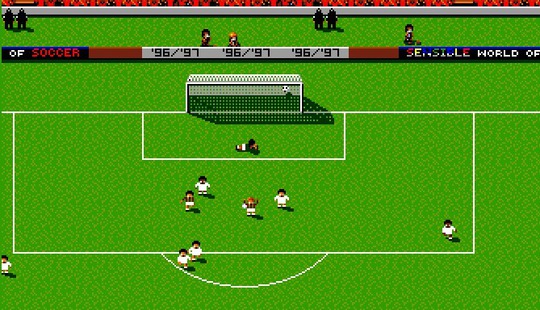
Best. Game. Ever.
With Euro 2012 taking place this month in Poland and Ukraine, this Best. Game. Ever. aims its sights on football games. And this fellow’s all-time favourite from an all-you-can-eat buffet of titles? Sensible World of Soccer.
It’s hard, so many years after I first played this top-down, single-button-necessary kick-about simulator, to remember precisely why it had such an impact. But it certainly managed to make its impression felt. Released in 1994, on the Amiga in my household, the simple-of-visuals game was the successor to Sensible Software’s original 1992 title and added management options to the first game’s furiously fast and oh-so addictive gameplay. This allowed me to play as a team from the South African league… or Norwich City… or AC Milan, and not only be responsible for their fortunes on the pitch, but also behind the scenes too. Before long I’d signed Alessandro Del Piero to Cape Town Spurs (a team that doesn’t even exist anymore).
Never one for ‘proper’ management simulators at the time, this entry-level ability to tinker with finances, player contracts and ground staff terminations (if that was an option; truth be told the grey matter isn’t quite crystal here), combined with the beautiful elegance that Sensi possessed from the outset, was like interactive candy to a joystick-toting baby… who was old enough to plug his Master System controller into the Amiga for rather easier handling. Although EA’s new FIFA International Soccer looked the superior game on paper, Sensible Software’s contribution to the ever-expanding pantheon of football videogames hit many more gameplay sweet spots than its fancy-pants isometric rival.
Nail a banana shot from the edge of the 18-yeard box? On FIFA, a chore; on SWOS, second nature. FIFA sounded incredible on the Mega-CD, where a real crowd was recorded for its whoops and cheers (I think it may have been a Tranmere Rovers match), but the crackling celebrations of Sensi were so much more satisfying, often achieved by lobbing the ball into the back of the net from 40 yards out. A light tap on the button to pass, a heavy press for power; press the opposite direction on the D-pad for elevation, left and right for curl: the controls for SWOS were perfectly simple and simply perfect. The multi-button competitors seemed unnecessarily complicated by comparison.
Naturally, age has a lot to do with this being my favourite football game. Had I been born several years later, I’ve no doubt that Pro Evolution Soccer would have been the one to beat. If I was a SNES player and not keen on a SEGA/Amiga combo, perhaps International Superstar Soccer would have impressed. And if I was a bleeding idiot with straw for brains, I expect 1987’s World Soccer on the Master System would have received these words of praise*. But, circumstances being what they were, and nostalgia what it is: this is my Best. Game. Ever. (so far as the whole kicking a small round thing around on the telly box thing goes).
(*Actually, the penalty shoot-outs on this were fun – check out footage on YouTube.)
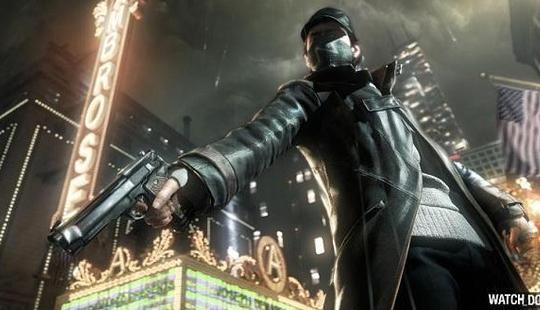
A Bunch Of Videos From This Year’s E3
Watch. Get excited. Or don’t. Loads of E3 2012 information at the annual gaming industry convention’s official site.
Assassin’s Creed 3 (expected October 2012)
Crysis 3 (expected February 2013)
God of War: Ascension (expected March 2013)
The Last of Us (expected early 2013)
Darksiders 2 (expected August 2012)
Halo 4 (expected November 2012)
Beyond: Two Souls (expected TBC; yes, that is Ellen Page)
Sleeping Dogs (expected August 2012)
Watch Dogs (expected TBC)
That last one, from Ubisoft, is shaping up to be the hit of this year’s E3. But at the time of writing the event’s not over, so…
Next time: it’s an RPG special. Dragon’s Dogma. Game of Thrones. Mass Effect. Skyrim. Final Fantasy VII. Secret of Mana. Eye of the Beholder…?






















